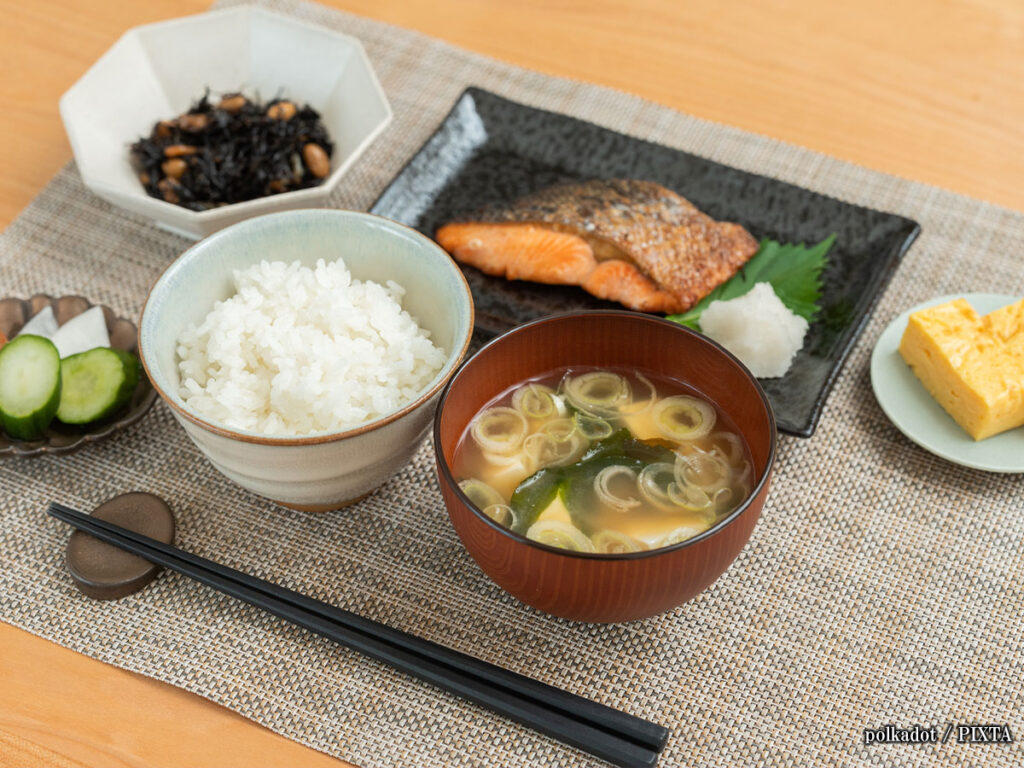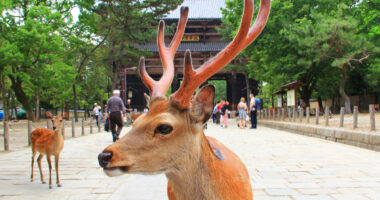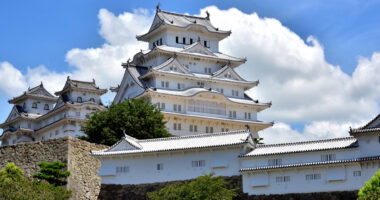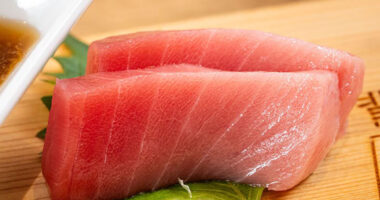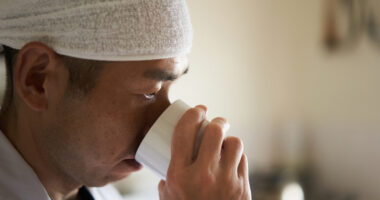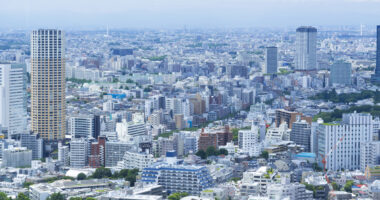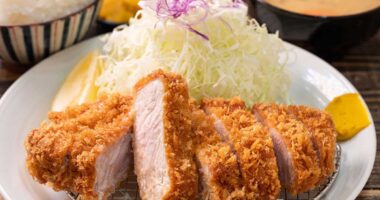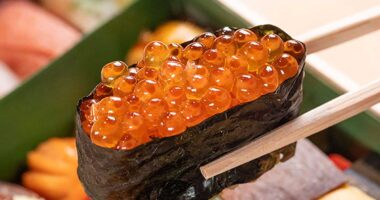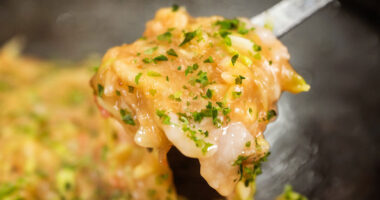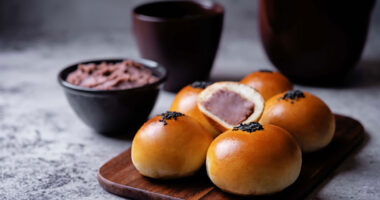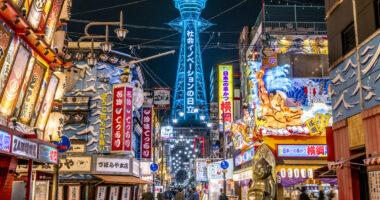For many visiting Japan, the traditional Japanese breakfast is a source of great culinary curiosity. More than just a meal, it’s a microcosm of Japanese culture with a deep historical background. From the fundamental concept of ichijū-sansai (one soup, three sides) to the careful selection of seasonal ingredients and beautiful presentation, every element is imbued with meaning. This article offers a detailed exploration of the traditional Japanese breakfast, from its basic components to dining etiquette.
For those wishing to delve deeper into the history and culture of Japanese cuisine that you should experience on your trip to Japan, please also see “The Charm of Japanese Food: Classic Dishes and Their Characteristics for Your Visit.”
The basic concept: ichiju-sansai
To understand the traditional Japanese breakfast, one must first be familiar with the concept of ichiju-sansai. This is a fundamental principle of Japanese food culture, referring to the basic form of a meal that combines ichiju (one soup) and sansai (three side dishes), served with a bowl of rice. This structure is a uniquely Japanese dining style that achieves both nutritional balance and aesthetic appeal.
The historical background of ichijū-sansai
It is generally believed that the concept of ichiju-sansai was established between the Heian (794-1185) and Muromachi (1336-1573) periods. Originating in the aristocratic society of the time, it spread to the samurai class with the development of the tea ceremony culture, and eventually became common among the general populace. This meal format is often seen as having developed under the influence of Buddhist philosophy and the theory of Yin-Yang and the Five Elements.
Even today, the idea of ichiju-sansai has been passed down as the foundation of Japanese food culture and is recognized as a nutritionally sound meal format. It is characterized by its balanced composition of protein, carbohydrates, vitamins, and minerals.
The role of each element in ichiju-sansai
In ichiju-sansai, each component has a distinct role. The soup warms the body and aids digestion, the main dish provides high-quality protein, and the side dishes supplement nutrients, primarily from vegetables. Rice serves as the carbohydrate source, forming the base of the entire meal and playing a crucial role in enhancing the flavors of the other dishes.
This combination is designed to provide a balanced intake of necessary nutrients in a single meal. Furthermore, visual beauty and the expression of seasonality are also considered important elements.
Components and characteristics of a Japanese breakfast
A traditional Japanese breakfast often consists of a set combination of dishes, each with its own deep meaning and characteristics. Here, we will take a closer look at the features and cultural background of these classic breakfast items. Understanding these dishes will surely deepen your appreciation of Japanese food culture.
The importance and varieties of rice
In a Japanese breakfast, rice is more than just a staple food; it holds a special significance. While white rice is common, an increasing number of households are using brown rice or multigrain rice. Even the method of cooking rice involves meticulous attention to detail, from the amount of water and heat control to the steaming time.
Japanese rice varieties that are sticky and sweet tend to be preferred. This characteristic makes the rice easy to eat with chopsticks and pairs well with other dishes. A warm bowl of rice is typically eaten for breakfast, signifying a way to warm the body and prepare for the day’s activities.
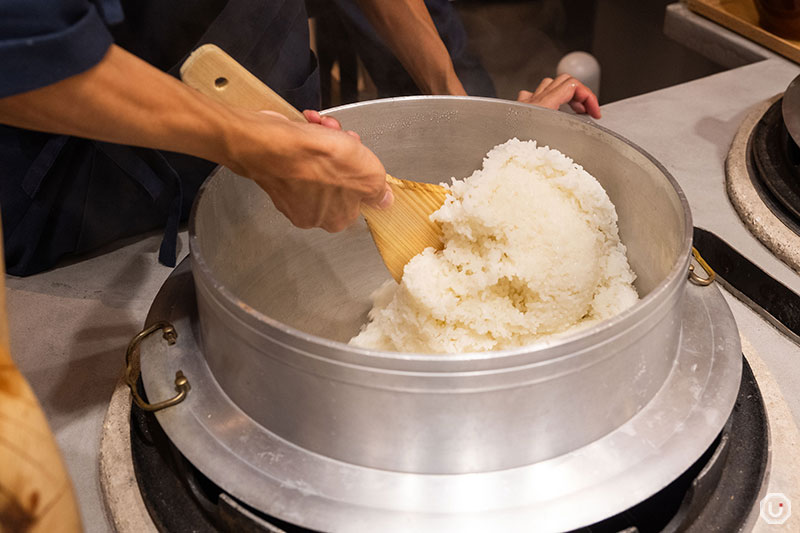
Rice cooked in a traditional hagama pot at Ume to Hoshi in Asakusa
Miso soup as ichiju
Miso soup is a beloved and indispensable part of the Japanese breakfast. The ingredients often include seasonal vegetables, seaweed, and tofu, allowing one to sense the changing seasons through the variations in the soup.
The soup stock, or dashi, is a crucial element in any miso soup recipe. Made from ingredients like kombu (kelp), katsuobushi (dried bonito flakes), or niboshi (dried sardines), dashi gives the soup its profound flavor. The type of miso and ingredients used can vary by region, allowing one to enjoy miso soup that reflects the local character.
Fish as the main dish
Grilled fish holds a prominent place as the main dish in a Japanese breakfast. Common choices include sanma (mackerel pike), saba (mackerel), aji (horse mackerel), and salmon, which are prepared with simple cooking methods like salt-grilling or grilling with a teriyaki glaze. Fish provides high-quality protein, which is vital for building body tissues.
As an island nation surrounded by the sea, Japan has an abundance of fresh seafood, which is said to be why fish became a breakfast staple. By choosing fish that is in season, one can savor the most delicious flavors of that particular time of year.
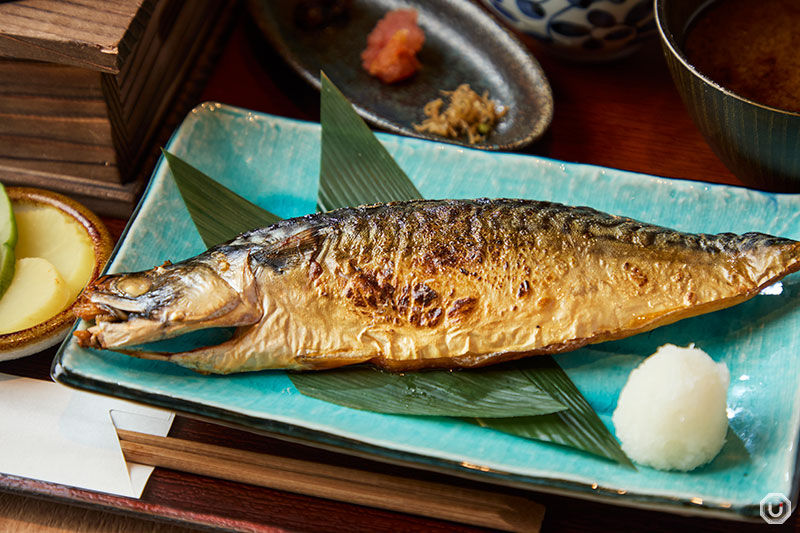
Grilled fish gozen at Shuzen Honohomare in Shinjuku
The diversity of side dishes
Side dishes in a Japanese breakfast are incredibly diverse, including items like nattō (fermented soybeans), egg dishes, pickles, nori seaweed, and simmered or blanched vegetables. Side dishes complement the main dish with different textures and ingredients, adding variety to the meal while balancing the overall nutrition.
Natto, in particular, has gained attention for its health benefits as a fermented food, characterized by its unique flavor and texture. Common egg dishes include tamagoyaki (rolled omelets) and onsen tamago (soft-boiled eggs), serving as another important source of protein. Pickles are preserved fermented vegetables that add a touch of sourness and a crisp texture to the meal.
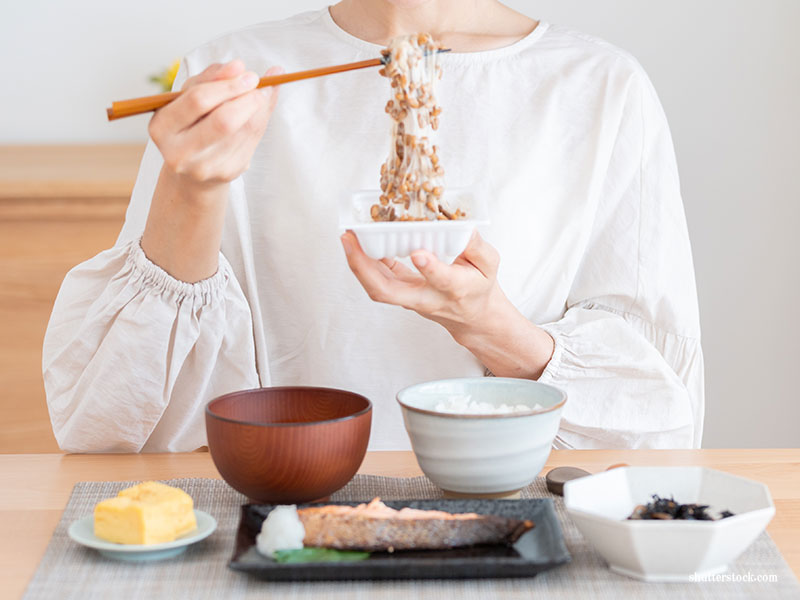
Photo for illustrative purposes
Manners and etiquette
When enjoying a Japanese breakfast, there are certain dining manners and etiquette to be aware of. These customs have been cultivated over a long period to ensure the meal is enjoyed beautifully and comfortably. By understanding these Japanese dining manners, visitors to Japan can experience the country’s food culture on a deeper level.
Basic chopstick etiquette
In a Japanese breakfast setting, observing proper chopstick etiquette is considered very important. Hold the chopsticks correctly, and use only the tips to pick up food. When putting them down, use a chopstick rest and place them neatly aligned. It is considered bad manners to stab food with your chopsticks or to use them to pull dishes closer to you.
Handling bowls and the order of eating
There are also conventions for handling bowls during a Japanese breakfast. It is standard practice to hold the rice bowl and soup bowl in your hand while eating, which allows for both ease of eating and an elegant posture. Regarding the order of eating, a method called sankaku-tabe (triangle eating) is recommended, which involves eating rice, miso soup, and side dishes in rotation.
This method allows you to appreciate the individual flavors of each dish while ensuring a balanced nutritional intake. Rather than finishing one dish completely before moving to the next, savoring a little of each dish in turn allows you to enjoy the harmony of the entire meal.
Greetings before and after the meal
In Japan, it is customary to say itadakimasu (literally, “I take”) before eating and gochisōsama (literally, “It was a treat”) after finishing. These phrases express gratitude for the food and respect for the person who prepared it. It is considered important to eat quietly and focus on savoring the meal.
Eating is seen not merely as an act of consuming nutrients, but as a cultural practice that expresses gratitude for the blessings of nature and the labor of others. Approaching the meal with this mindset will lead to a deeper understanding of Japanese food culture.
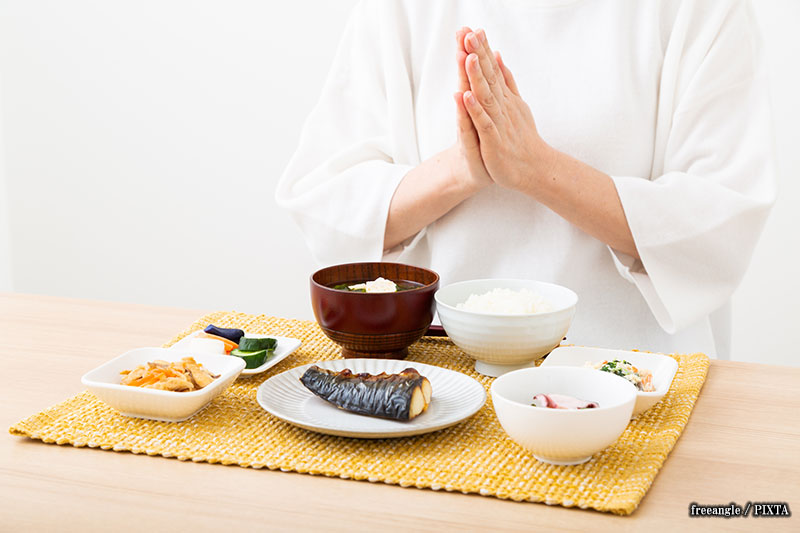
Photo for illustrative purposes
Nutritional value as a healthy breakfast and modern applications
From a modern nutritional perspective, the traditional Japanese breakfast is an exceptionally rational and healthy meal. Its balanced combination of nutrients, use of fermented foods, and incorporation of seasonal vegetables offer many elements that can be applied to contemporary life. Here, we will delve into its nutritional value and how it can be adapted for a modern lifestyle.
The scientific basis for nutritional balance
The ichiju-sansai structure naturally fulfills the conditions of a well-balanced meal recommended by modern nutrition science. Rice provides carbohydrates; fish offers high-quality protein and fats; and the miso soup and side dishes supply vitamins, minerals, and dietary fiber.
Fermented foods like miso and natto are known to promote a healthy gut environment, aligning with modern health trends. Furthermore, the meal is rich in nutrients that are often lacking in modern diets, such as the unsaturated fatty acids found in fish and the antioxidants in vegetables.
The importance of seasonal vegetable dishes
It is common for a Japanese breakfast to feature seasonal vegetable dishes. Wild mountain vegetables in spring, summer vegetables, root vegetables in autumn, and preserved vegetables in winter are all incorporated into meals. The nutritional value of vegetables is at its peak when they are in season, contributing to health maintenance through diet.
Adapting to modern life
Even in our busy modern lives, it is possible to incorporate elements of the traditional Japanese breakfast. Time-saving techniques can be employed, such as preparing dashi the night before, using frozen fish, or having pre-made side dishes on hand.
It is also important not to be dogmatic about a perfect ichiju-sansai, but to adjust the meal according to your physical condition and available time on any given day. Even just a bowl of miso soup can become a satisfying dish by simply adding some seaweed or tofu to an instant mix.
Regional differences and characteristics in breakfast culture
Across Japan, there are unique breakfast cultures rooted in local climates and traditions. While the basic ichijū-sansai structure is common, the ingredients, cooking methods, and flavor profiles show distinct regional characteristics. Learning about these differences provides a deeper understanding of Japan’s diverse food culture.
Breakfast culture in the Kantō region
Breakfast in the Kantō region is characterized by its use of koikuchi shōyu (dark soy sauce). Red or blended miso is often used for miso soup, and a relatively clean, savory flavor is preferred. It is said that the influence of the artisan culture dating back to the Edo period (1603-1868) led to the development of a simple and practical breakfast style.
The Kanto region is also a major producer of nori, and products like grilled nori are commonly served at breakfast.
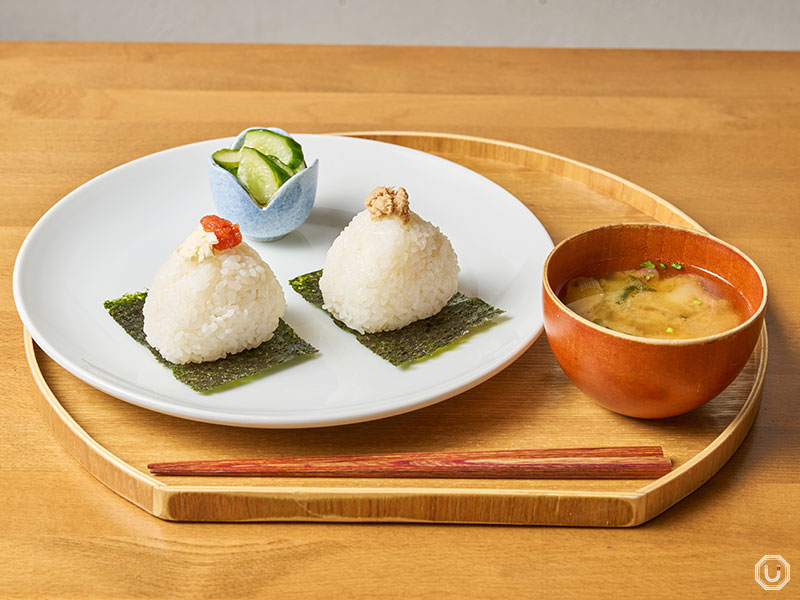
A breakfast set with nori-wrapped rice balls and miso soup at Onigily Cafe in Nakameguro, Tokyo
Unique characteristics of the Kansai region
In the Kansai region, dashi culture is particularly developed, with a delicate flavor profile based on kombu stock. White miso is often used in miso soup, offering a sweet and elegant taste. It is generally believed that a refined breakfast culture was formed under the influence of Kyoto’s imperial court culture and Osaka’s merchant culture.
Furthermore, usukuchi shōyu (light soy sauce) is frequently used in Kansai, with an emphasis on cooking methods that preserve the natural color and flavor of the ingredients. The pickles, as typified by kyō-tsukemono (Kyoto-style pickles), are also diverse and beautifully presented.
Characteristics of other regions
The Tōhoku region, with its cold climate, has many preserved foods, and its cuisine features salty flavors and abundant fermented products. In the Kyūshū region, sweet miso and soy sauce are common, and ingredients reflect the warm climate. Hokkaidō has developed a breakfast style that utilizes fresh seafood and dairy products.
These regional variations reflect the local climate, geography, and history, showcasing the rich diversity of Japan’s food culture. When traveling in Japan, experiencing the local breakfast is a great way to gain a deeper cultural understanding.
How to experience a traditional Japanese breakfast
There are several ways for visitors to Japan to experience a traditional Japanese breakfast. From staying at a ryokan (traditional inn) and dining in a private home to trying to make it yourself, there are various approaches to engage with Japanese breakfast culture. Each method offers a different charm and a deeper cultural experience.
Breakfast at a ryokan
The breakfast served at a Japanese ryokan is one of the most authentic ways to experience a traditional Japanese breakfast. Ryokans use local ingredients to serve a beautiful, seasonal breakfast. Great care is taken with the tableware and presentation, making it a feast for the eyes as well.
Many ryokans offer breakfasts that incorporate local specialties and cooking methods, allowing you to experience the regional food culture at the same time. You can also gain a deeper understanding by listening to the staff explain the dishes and proper etiquette.
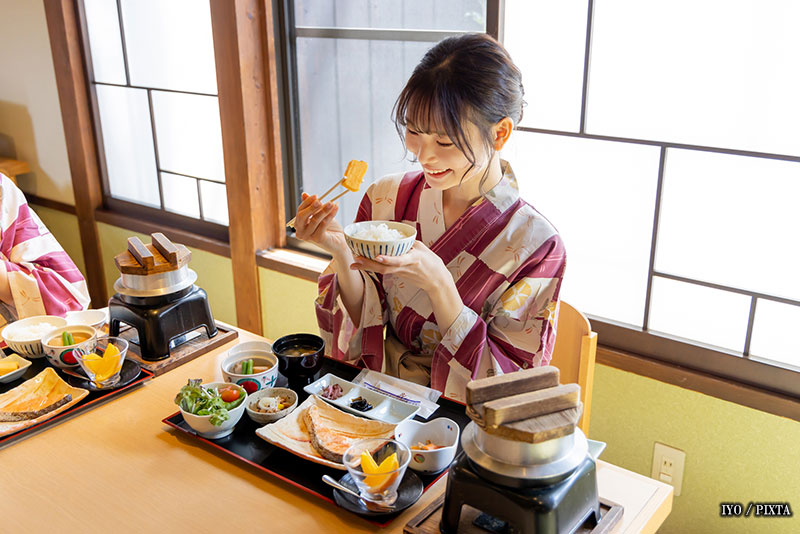
Photo for illustrative purposes
Joining cultural experience programs
Throughout Japan, there are cooking classes and cultural experience programs designed for foreign tourists. In these programs, you can learn everything from how to actually prepare a Japanese breakfast to dining etiquette and the cultural background.
By getting hands-on and cooking the meal yourself, you can gain a deeper understanding and satisfaction that cannot be obtained from simply eating. It also provides an opportunity to consider Japanese food culture from various perspectives through interaction with other participants.
Recreating it at home
Using the knowledge gained during your stay in Japan, it is also possible to recreate a Japanese breakfast at home after you return. Basic seasonings and ingredients can be purchased at Japanese grocery stores in many countries. The key is not to aim for perfection but to be creative with available ingredients.
We recommend starting with simple dishes and gradually working your way up to more authentic ones. Begin with miso soup, white rice, and a simple side dish, and once you get used to it, try tackling grilled fish or more elaborate side dishes.
Conclusion
The traditional Japanese breakfast, based on the fundamental structure of ichiju-sansai, is a wonderful food culture that achieves both nutritional balance and cultural significance. The harmony created by rice, miso soup, grilled fish, and a variety of side dishes possesses an artistic beauty that transcends a mere meal.
By learning the proper dining and chopstick etiquette, you can experience Japanese food culture on a deeper level. The tradition includes many elements that are excellent for a modern healthy breakfast, such as seasonal vegetable dishes, the culture of dashi, and the use of fermented foods.
We truly hope that all visitors to Japan will take the opportunity to experience this traditional breakfast and touch upon a part of Japan’s rich food culture. We invite you to savor the gratitude towards nature and the aesthetic sense of the Japanese people encapsulated within the harmony of ichiju-sansai.
